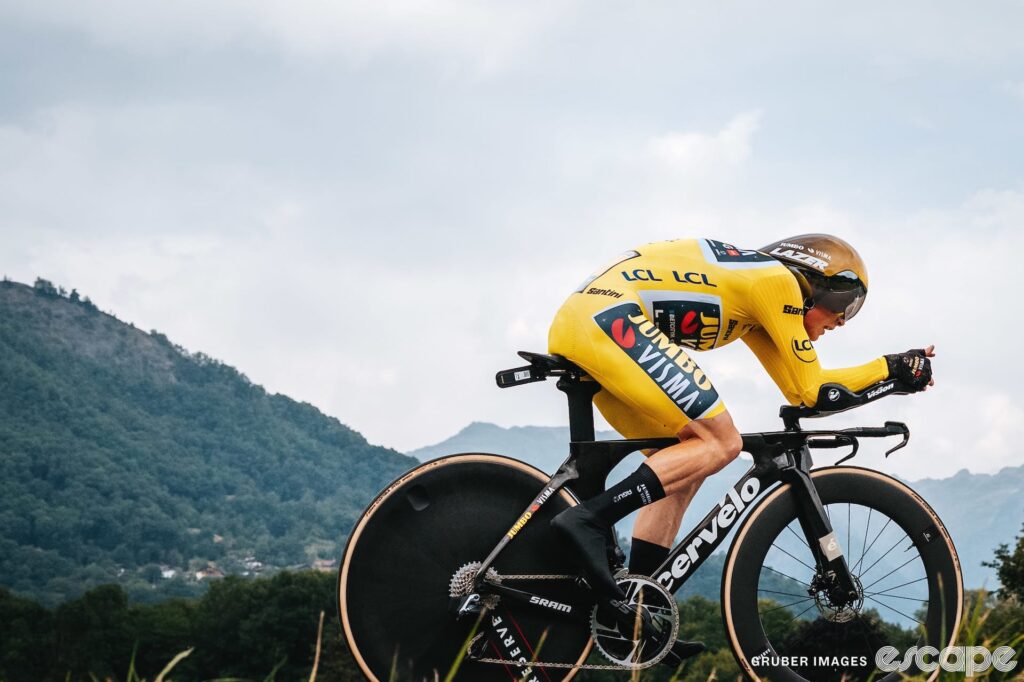
The Tour de France’s mountain time trial has evolved into a complex battle of strategy and technology, where equipment choices can make or break a rider’s performance. While a time trial bike is typically the fastest option, only two riders are expected to use them in this year’s Stage 13, and despite the benefits of a front disc wheel, none will be seen.
Time trials at the Tour de France have historically been a test of raw power and endurance. However, in recent years, the focus has shifted to include a myriad of technical decisions that can significantly impact outcomes. Although equipment alone won’t guarantee victory, lacking the optimal setup can hinder even the most formidable competitors.
The Complexity of Mountain Time Trials
At first glance, mountain time trials might seem to favor sheer strength over aerodynamics. As the gradient increases and speeds decrease, gravity becomes a more significant factor. Yet, the need for aerodynamic efficiency remains crucial, especially given the pace at which general classification (GC) contenders climb.
Stage 13 of this year’s Tour is not merely another mountain time trial; it represents one of the most intricate equipment challenges of the season. The outcome will be determined by a complex interplay of equipment choices, aerodynamic considerations, weight penalties, and terrain-specific strategies. This stage is not just about pacing or physical prowess but about mastering the finer details.
Equipment Choices and Their Impact
The decisions regarding equipment range from the selection of skinsuits and socks to the choice between a lightweight road bike with aerodynamic modifications and a heavier full time trial setup. Each choice contributes to a delicate balance between aerodynamic efficiency on the initial flat 3 km and the harsh reality of gravity on the subsequent 8% climb. These decisions are crucial in maximizing a rider’s potential.
Despite being a race against the clock, Stage 13 is vastly different from the relatively flat Stage 5 time trial. It demands a different type of rider and a distinct set of equipment. The competition is likely to be a showdown between Jonas Vingegaard and Tadej Pogačar, but the equipment decisions are where complexity truly arises.
Historical Context and Expert Insights
The evolution of time trials in the Tour de France reflects broader trends in cycling, where marginal gains and technological advancements have become pivotal. Historically, time trials were straightforward tests of endurance, but today’s races require a blend of physical and technical prowess.
According to cycling performance expert Dr. Emily Carter, “In modern cycling, the margins are so fine that every detail matters. Riders and teams are constantly seeking ways to optimize performance, whether through equipment, aerodynamics, or nutrition.”
“In modern cycling, the margins are so fine that every detail matters.” – Dr. Emily Carter
The focus on equipment and technology parallels developments in other sports, where innovation and precision have become vital components of success.
Looking Ahead
As the Tour de France progresses, the implications of these equipment choices will extend beyond Stage 13. Riders and teams will continue to analyze and refine their strategies, learning from each stage to enhance their performance in future races.
The mountain time trial serves as a reminder of the ever-evolving nature of competitive cycling, where success hinges on a harmonious blend of human effort and technological advancement. As the race unfolds, the world will watch closely to see which rider and team have mastered the art of optimization.





